Nature is teeming with a variety of fascinating insects, but unfortunately, some of them have the ability to leave an unwelcome mark in the form of painful stings. In this blog post, we will delve into the world of common bug stings which are found in the UK countryside and urbanized areas, equipping you with the knowledge and strategies to navigate these encounters and minimize their impact on your well-being. By understanding the characteristics of different insects and their stinging behaviors, you will be able to identify potential threats and take proactive measures to protect yourself. Furthermore, we will explore effective remedies and first-aid techniques to alleviate the discomfort caused by bug stings and promote faster healing. Let’s discover how to coexist with insects while minimizing the impact of their stings, ensuring you can enjoy the great outdoors with confidence and peace of mind.
Honeybees are the most common stinging insects in the UK. 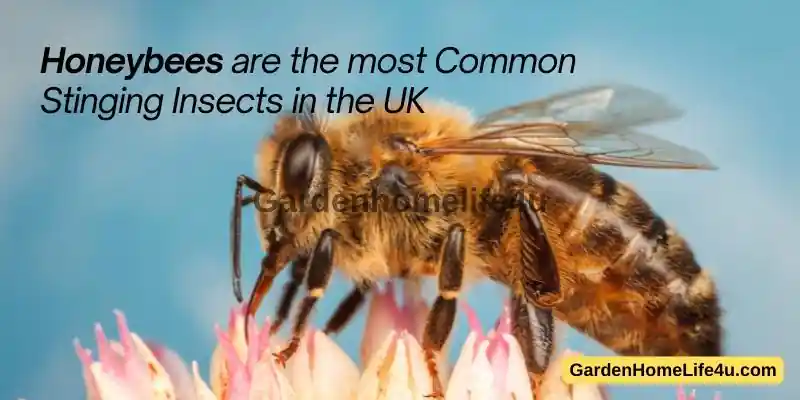
Honeybees are the most common stinging insect in the UK. As their name suggests, these insects produce honey and pollen. They can be found all over the UK, but they are more common in southern regions. While honeybees are not the only type of bee in the UK (there are over 20 species of native bumblebee), they tend to be more active during summer months when flowers are blooming and food sources for them are plentiful.
If you see a bee near your home or garden, don’t panic! They are not aggressive and will only sting if provoked. If you’re worried about getting stung by one of these insects, try planting some flowers that attract bees but don’t have nectar that they can eat.
Bees are important pollinators and their survival is vital to the health of many ecosystems around the world. As bee populations decline because of pesticides, habitat loss, and climate change, it’s crucial that we do what we can to help them.
Bees and wasps like to build nests in similar places. 
Bees and wasps like to build nests in similar places. These include:
- Out of the way. Wasps are especially likely to build their nests under eaves, in attics You may find one of these nests if you are exploring nature or clearing out an old building. If you see a nest, try to avoid it as much as possible. If you need to get close to the nest, wear protective clothing and cover your face with a mask., and in other dark, warm areas that are out of the way.
- In the garden or field near your house. Many bees and wasps will build their nests outside your house where they can harvest pollen from flowers nearby.
What to do if you get stung. If you get stung by a bee or wasp, the most common reaction is to try and brush it off. This is not the best thing to do because it could cause the string to break off in your skin and become infected.
If you do get stung, the best thing to do is wash the area with soap and water. If there is any venom left, apply ice or a cold pack to reduce swelling. Most stings can be treated at home, but if you’re having trouble breathing or feel faint, you should seek medical attention.
Mosquito Bites are also common 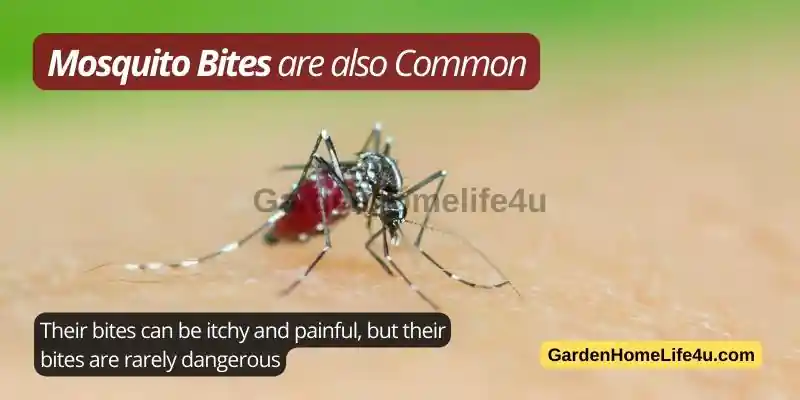
Mosquito bites are also common in the UK. These little critters can cause some serious discomfort but are rarely fatal. Their bites can be itchy and painful, but their bites are rarely dangerous. They’re most common in hot weather when they’re out looking for a blood meal to keep them going during their pupae stage (which is where they lay eggs).
If you do get bitten by a mosquito, there’s nothing to worry about—just apply antiseptic cream or aloe vera gel over the bite area and you’ll soon feel better!
Not to Mention: Red Ant Bites 
Red ants are not dangerous, but they do have a bite that can be painful. They are usually found in warm climates and are most likely to be found in the southern regions of the UK. Red ants do not bite unless provoked, so if you find red ants on your property and want them removed, call in professionals to deal with them.
The red ant bite is a bit more painful than a bee’s or wasp’s sting, but it does not cause any permanent damage. There have been no recorded deaths from red ant bites in the United Kingdom, so there is no need to worry about these creatures.
There are other types of ants in the UK that can cause problems. If you see a small red ant with pincers, this is most likely a Fire Ant and they can be dangerous if bitten by one – call an expert to deal with them quickly.
Black Fly Bites are more common than you think 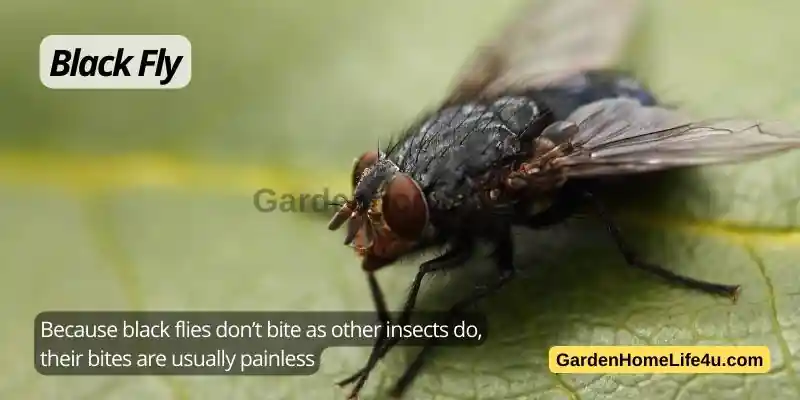
Black flies are a type of gnat and they’re common in the UK. In the summer months, you might find them buzzing around your head when you go outside. If a black fly bites you, it can cause redness and itchiness.
Because black flies don’t bite as other insects do, their bites are usually painless. They inject saliva into your skin so that they can eat your blood from the wound left behind by the bite. The bite itself only lasts for about 10 minutes but if left untreated it could become infected so make sure to wash your hands thoroughly after handling or killing any flies! You can also get relief from itching with an antihistamine cream or cold compress over the affected area until the inflamed skin goes down again (this will take longer than usual).
Ticks: The Secret and Hidden Enemy 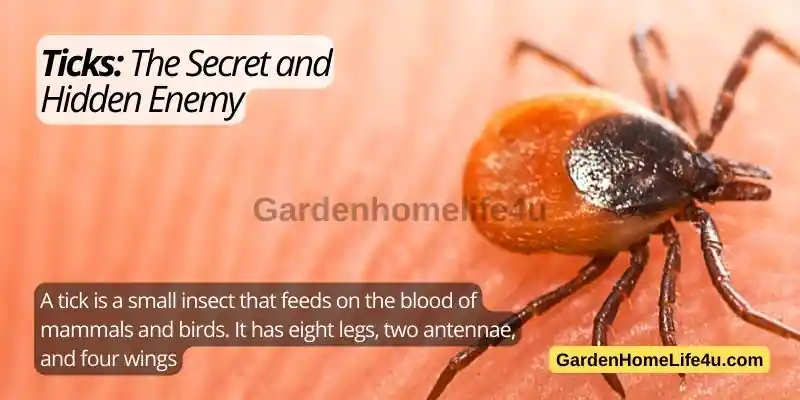
A tick is a small insect that feeds on the blood of mammals and birds. It has eight legs, two antennae, and four wings.
Ticks are commonly found in the summer months and especially on warm, sunny days when they have plenty of time to wander around looking for their next meal. They tend to do this at dawn or dusk as they’re slowly waking up from hibernation until it’s time for them to feed again—so look out for them near trees or bushes during these times if you want to spot one!
Ticks are more common than you think. There are about 50 species of ticks in the UK, but only a handful can cause serious harm. Ticks are most commonly found in woodland areas and grassy places during the summer months when there’s plenty of food around for them to feed on.
Honeybee stings are painful due to their venom, but certainly not lethal. 
The honeybee is one of the most common insects in the UK, and also one of the most stinging. Although they are not aggressive, their venom is extremely painful when it enters your skin. Honeybee stings are rarely fatal, but you should always seek medical attention if you suspect a wasp or bee has stung you.
Honeybees have a barbed stinger that they use to inject venom into your skin along with their eggs as they die after delivering it—that’s why it hurts so much when one lands on you! The pain can last up to 24 hours.
Honeybee stings are painful due to their venom, but certainly not lethal. Most people who have been stung by a honeybee are able to walk around with just minor discomfort and will only experience swelling in the area where they were stung. However, if you do get stung it’s important that you keep an eye out for symptoms like difficulty breathing or dizziness because if left untreated these conditions could lead to death.
Wasp stings are more painful than honeybee stings, but they’re rarely fatal. 
Wasp stings are more painful than honeybee stings. This is because wasps have a much larger venom sac, which allows them to inject more venom into the skin. Wasp stings also tend to be more painful than bee stings because they have barbed stingers that can pierce and damage tissues in the skin, causing prolonged pain. However, it’s important to note that when a person has an allergic reaction to either type of insect sting, their symptoms will be worse than those who don’t have an allergy—regardless of whether they’re bitten by bees or wasps!
If you get stung by either type of insect and your pain doesn’t go away after an hour or so (or if it does but then returns), seek medical attention immediately as this could mean that you’ve got an adverse reaction to the venom—which could lead up to death if not treated properly within 12 hours!
There are a few differences between wasp and bee stings: Wasp venom contains more protein than bee venom, making it more painful. This is because bees have barbed stingers that can pierce the skin—whereas wasps do not.
Hornets kill fewer people than bees, but they have more potent venom. 
Honeybees are the most common stinging insects, but hornets and wasps are the more dangerous of the two. Hornets kill fewer people than bees, but they have more potent venom. They’re also more likely to be aggressive and attack people when they feel threatened. Hornets also have a painful sting that lasts longer than honeybees’ stings do; while a honeybee’s stings can hurt for days, a hornet’s can last months or even years if left untreated.
Hornets are common throughout Europe, but they’re especially prevalent in countries with temperate climates. They can often be found nesting in trees or other areas that provide shelter from the elements. If you live near one of these areas, it’s important to know how to protect yourself and your family from being stung by hornets.
However, if you’re allergic to bee stings or have a history of anaphylactic shock from bee stings, it’s important to avoid any contact with hornets at all costs. This is because hornet stings can be deadly for people who are allergic to them. While many countries require hospitals to have access to epinephrine (a hormone produced by the body when it goes into shock), this may not always be the case in your country.
Hornets and wasps build their nests in similar places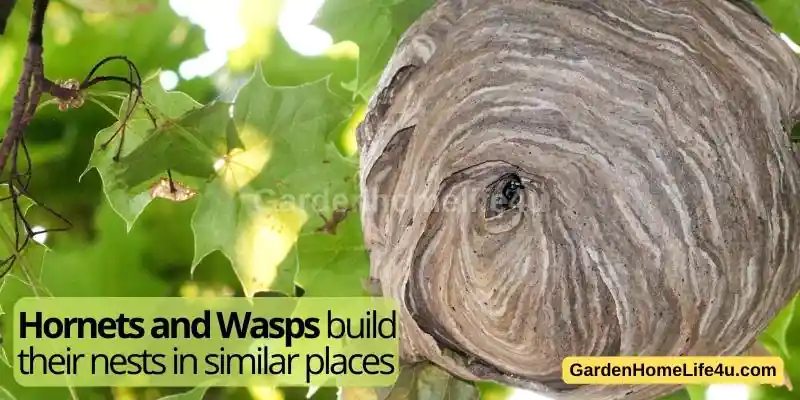
Hornets and wasps build their nests in similar places, so you can use the same strategies to spot them. Honeybees are the most common stinging insects in the UK, but beekeepers will often know if there are any near your house. If you think that a bee has been nesting in your house or yard for some time, speak with an exterminator about getting rid of it before it becomes more of a problem.
Mosquito bites are also common in the summer months and usually aren’t serious unless you have an allergic reaction. Mosquitoes naturally seek out people who smell like blood because they need proteins from us to develop their eggs—and we happen to be very good protein sources! Ants are another common bug bite; they’re attracted by sweet things like soda pop or cookies that you may have on hand while outdoors during summertime picnics or outings.
While most bug bites are harmless, it’s important to take them seriously if you suspect that they may have come from an infected insect. If your skin shows signs of redness or swelling around the bite, see a doctor right away.
Bug bites and insect stings often look alike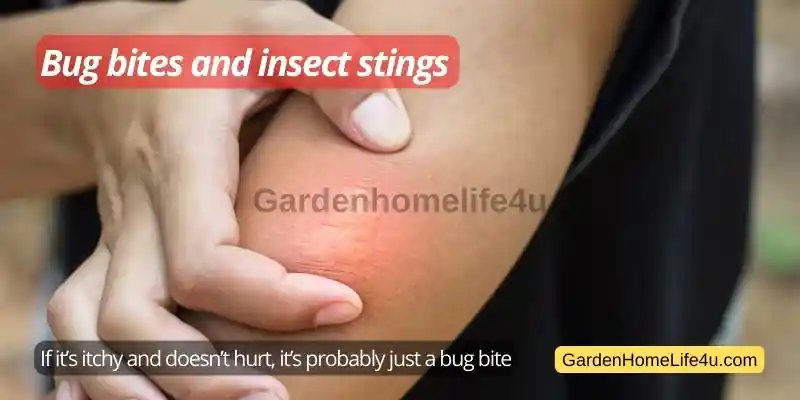
Bug bites and insect stings often look alike, so you might feel like you’ve been stung when it’s a bite. If it’s itchy and doesn’t hurt, it’s probably just a bug bite.
Bug bites can be red, white, or black; round or oval; flat or raised; small or large—they come in all different shapes and sizes! Some bug bites are only on the surface of the skin (like mosquito bites), while others are inside your mouth or eyes.
Bug bites can cause a reaction in some people that goes beyond discomfort—it’s called an allergic reaction. An allergic reaction to bug bites is when your body’s immune system overreacts to the bite and produces symptoms like hives, swelling near the area of contact (usually around where you were bitten), redness on other parts of your body
Knowing what type of sting due to what type of bug you’ve been bitten by will help you know how to treat the sting or bite as well as how serious it is.
For example, if you have been bitten by a bee then the first thing that needs doing is getting away from them. If a bee stings in one place, then there’s not much chance that another bee will come along and sting it too (unless there are two nests in close proximity). However, if someone has been stung on the hand, then it’s very likely that other bees will try and sting them again because they see their nest is disturbed. In this case, an antihistamine may be used prior to applying an ice pack – but otherwise, there isn’t much else we can do except wait until the swelling goes down!
A similar situation occurs with wasps; however this time the most important thing is not allowing anyone else near who could get stung themselves – especially children who aren’t aware of how dangerous these creatures can be! Removing any vegetation which might give shelter for wasps’ nests should also be done quickly before any more stings happen – otherwise, everyone around could suffer injuries like yours too!
Ticks Carry Lyme Disease 
Ticks are small arachnids that can be found in wooded areas and grassy areas. They are usually brown, but sometimes have dark spots on them. They attach to your skin with their mouthpart, which is called the chelicera. The tick’s body then swells as it sucks blood from you! If you find a tick attached to your skin, remove it immediately. If you fail to do so within 24 hours of attachment, the tick may become engorged (full of blood), detach itself from its host (you), and drop off into the grass where it will lay eggs over the winter months.
Some ticks carry Lyme disease which is caused by bacteria entering through bites or scratches from infected ticks or other animals such as deer mice or squirrels
If you see a tick on your pet or yourself, do not try to remove it by using tweezers. Instead, visit your doctor and have them remove it for you. You should also see your doctor if you have any symptoms of Lyme disease, such as fever, headache, fatigue (extreme tiredness), muscle aches, and joint pain.
Knowing what type of sting – Type of bug you’ve been bitten by will help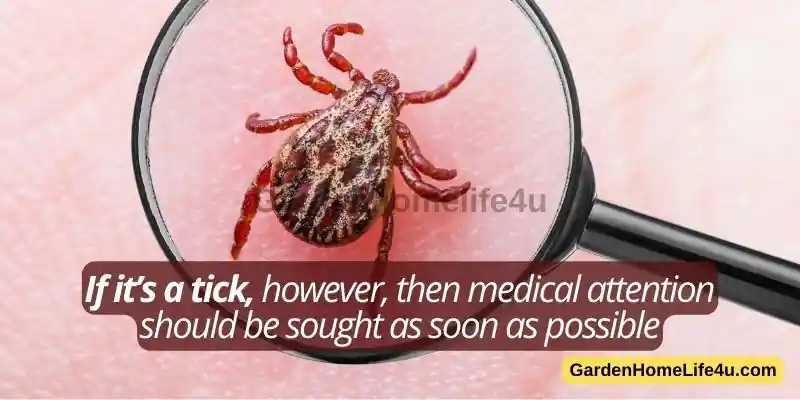
If you are stung or bitten by a bug, knowing the type of bug that stung you will help you know what to do. If it’s a bee or wasp, for example, this means that the site of the sting should be cleaned and then left alone. If it’s a tick, however, then medical attention should be sought as soon as possible.
Knowing the type of bug that stung you will also help you know how to treat the sting or bite as well as how serious it is. For instance, while most adults are not at great risk of being bitten by a common spider like an orb weaver (Araneus diadematus), they can be very dangerous for small children and pets because they carry venom similar to that of a bee or wasp.
Conclusion
We hope that you have learned some valuable information about the common stinging insects in the UK and how to identify them.


